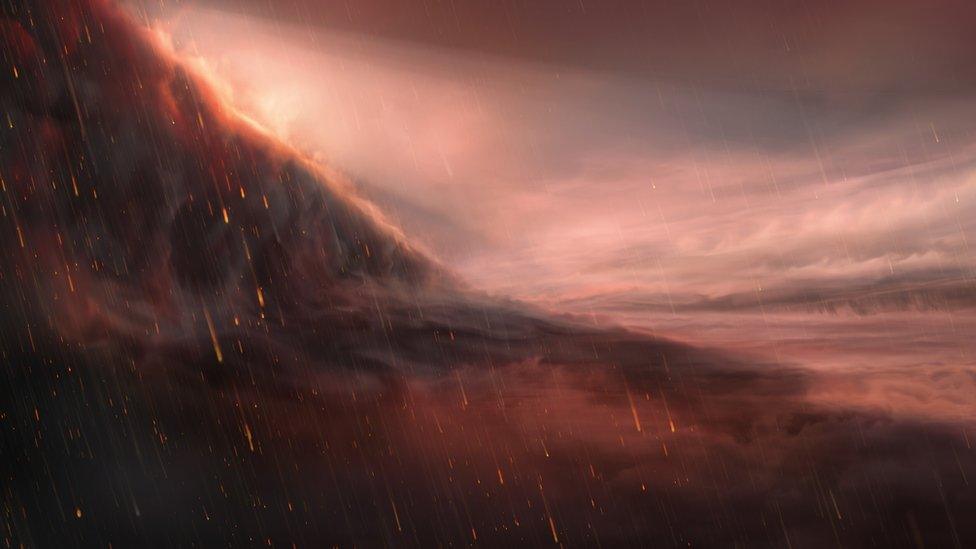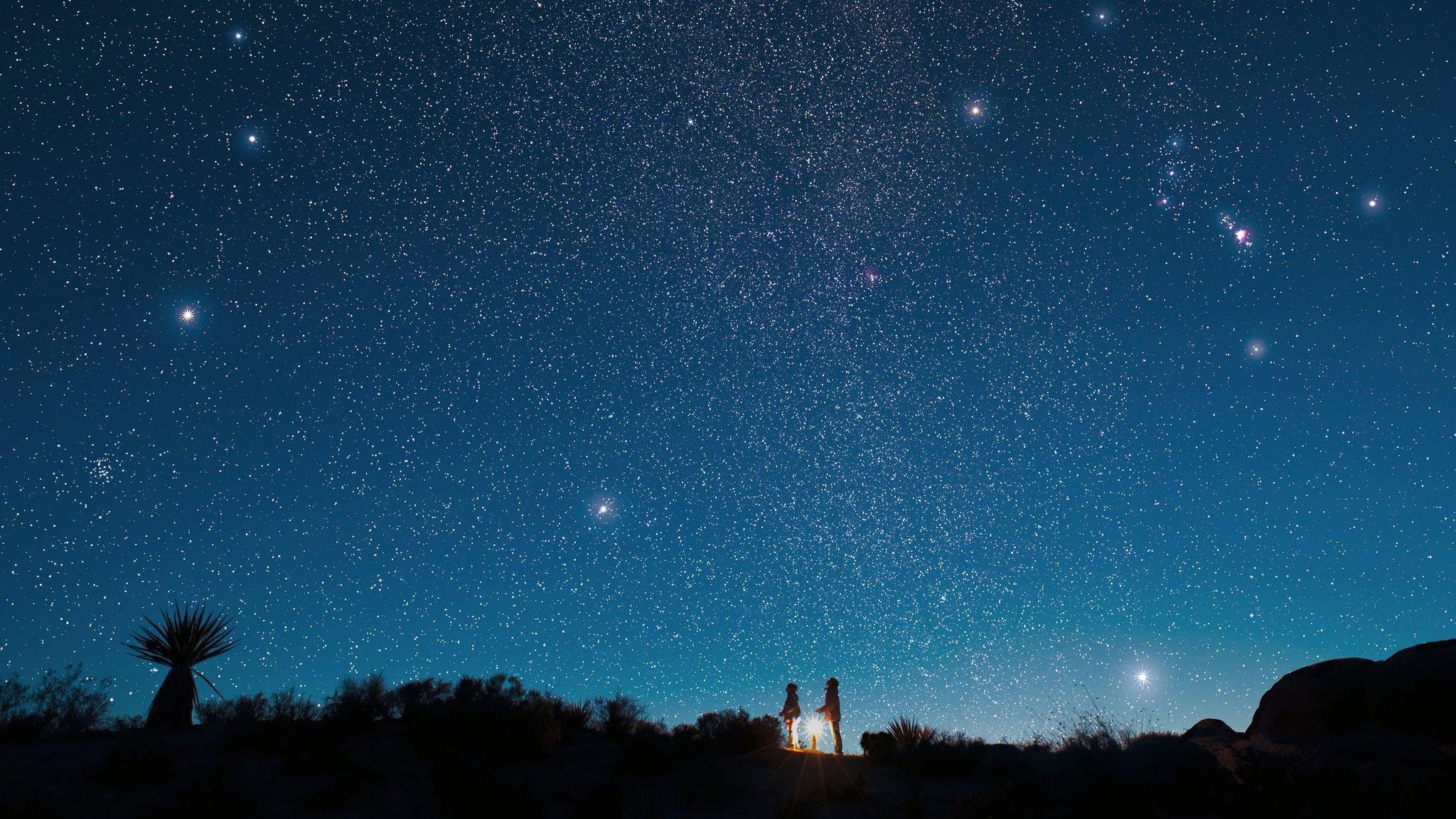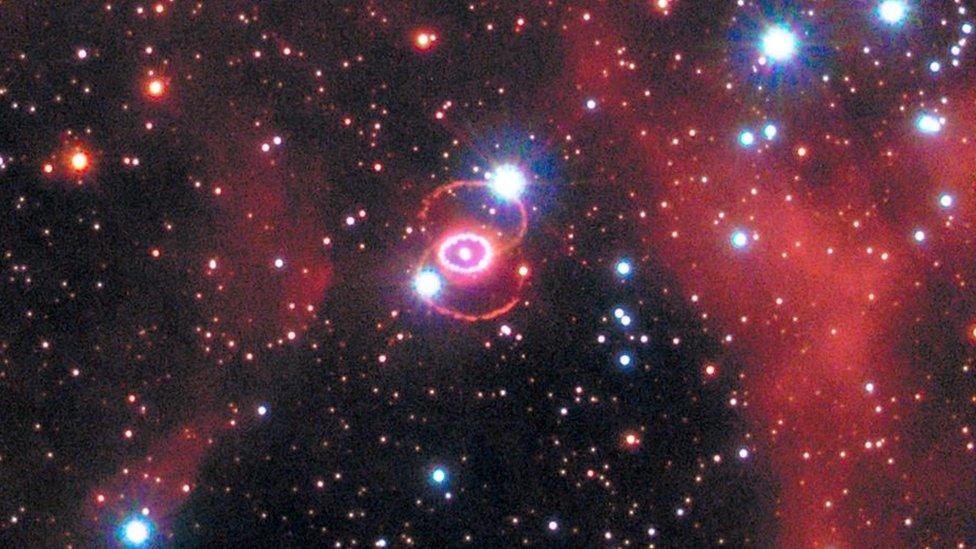Space: Extreme planet discovered where it rains iron
- Published
- comments

An artist's impression of the ultra-hot planet
An ultra-hot planet where it's believed it rains iron has been observed by researchers using a huge telescope.
The exoplanet is located around 390 light years away.
'Exoplanet' is the name given to a planet outside our own Solar System which orbits around a different star than our Sun.
Known as WASP-76b, the planet has one side which is always facing the star and so is in daylight, but the other side is always in darkness.
The day side gets thousands of times more radiation than the Earth gets from the Sun.
It's also so hot (temperatures reach above 2400 degrees Celsius!) that researchers believe metals like iron vaporise into the atmosphere.
The study published in science journal Nature says that the extreme temperature difference between the day side and night side causes strong winds.
These then bring the iron vapour to the night side.
Like water vapour, when it hits the cooler temperature, experts believe the iron condenses and 'rains' down in droplets.
"Surprisingly, however, we do not see the iron vapour in the morning," says David Ehrenreich, a professor at the University of Geneva in Switzerland. The reason, he says, is that "it is raining iron on the night side of this extreme exoplanet".
Astronomers were able to make the observations using the European Southern Observatory's VLT - the VLT stands for 'Very Large Telescope' - which is based in the Atacama Desert in Chile.
For the first time they noticed these chemical variations on the ultra-hot gas giant planet.
- Published7 September 2018

- Published20 November 2019

- Published13 February 2020

